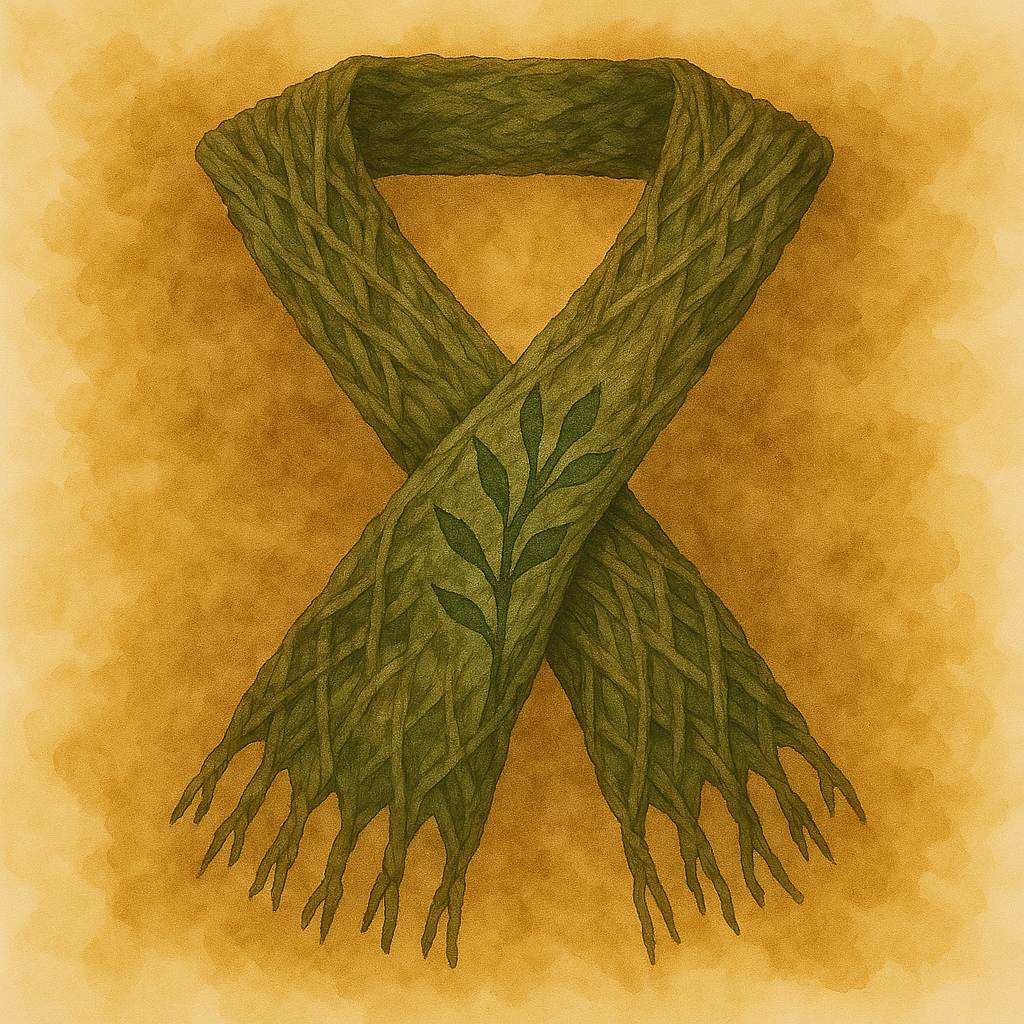Loom Scarf
Journal Entry IV: The Ceremonial Scarf–Tabard of the Ey’Feay
Aien Ballen, Contract Archaeologist to the Dragon Imperium, Year 5330 of the Third Cycle
Abstract
Among the few vestiges of Ey'feay material culture is a distinctive ceremonial garment that my colleagues and I referred to as the Loom Scarf, which adorned the shoulders of Second-Cycle elves during sacred rites. Although the floral elves required no true clothing, these tabard-like scarves bound them symbolically to The Wombwood’s life-force and to one another. This entry examines two fragmentary relics and reflects on their construction, use, and cultural resonance.
Introduction
Ey’Feay physiology precluded conventional attire: their half-flora bodies neither thirsted for warmth nor felt the sting of modesty. Yet pictographic inscriptions and rare textile fragments hint at a halcyon era in which these elves draped themselves with long, leaf-patterned scarves during ceremonies of bloom and mourning. Known in later lore as the Loom Scarfs, this garment functioned less as clothing and more as a living emblem, a woven testament to communal identity and Wombwood’s enduring influence.
Surviving Evidence
Despite millennia of decay, two relics provide concrete insight:
- Tendril-Weave Fragment
Discovered within a sealed alcove in the Sunken Archives, this sixteen-inch strip of fibrous root-cloth retains traces of emerald and amber dyes. Analysis reveals residual plant matter, likely infused sap, suggesting that the scarf was “alive” to the touch, its fibres still faintly responsive to light. The fragment’s dimensions and curvature imply it once looped loosely around the neck and crossed the chest in a simple X-pattern. - Stone Relief of the Ceremonial Dress
Unearthed near one of the root-fall zones, this small alabaster plaque depicts two half-flora figures standing before a stylised tree. Each figure wears a broad scarf draped over one shoulder and secured at the opposite hip. The relief’s shallow carvings emphasise the garment’s width and show leaf-shaped cutouts along its hem.
Cultural Emanations
From these artifacts and accompanying lore, several cultural functions of the Loom Scarf emerge. First, it served as a ritual mantle in ceremonies marking each new solar cycle, its dyed hues shifting to reflect seasonal blooms. Second, it acted as a symbol of unity, worn by clans during collective Sap-Weaving rites to braid communal vows into resin cords. Finally, in mourning ceremonies for Wombwood, the scarf was dyed jet-black, a practice said to have seeded early shadow-touched customs among certain lineages.
Hypotheses and Speculations
Given the residual plant matter in the Tendril-Weave Fragment, I speculate that scarves were bio-treated with sap elixirs to maintain flexibility and to carry subtle geomantic imprints of Wombwood’s energy. The X-pattern seen in both textile and relief likely mirrors the crossing of roots and branches, an emblem of life’s interconnectedness. Moreover, the evolution of leaf-cutouts into modern elven lacework suggests a continuity of aesthetic principle: that garments, even as they became purely decorative, remained conduits of ancestral memory.
Conclusion
Though Ey’Feay rarely clothed their bodies, the Loom Scarf stood as a powerful ceremonial artifact, one that bound them to Wombwood and to each other. Fragmentary though our evidence may be, the interplay of tactile weave and carved relief illuminates a culture for whom the boundary between nature and self was seamless. As further textile finds come to light, we may yet unravel more threads of this living tradition, reviving the patterns that once girded the shoulders of the Floral Mothers.




Comments